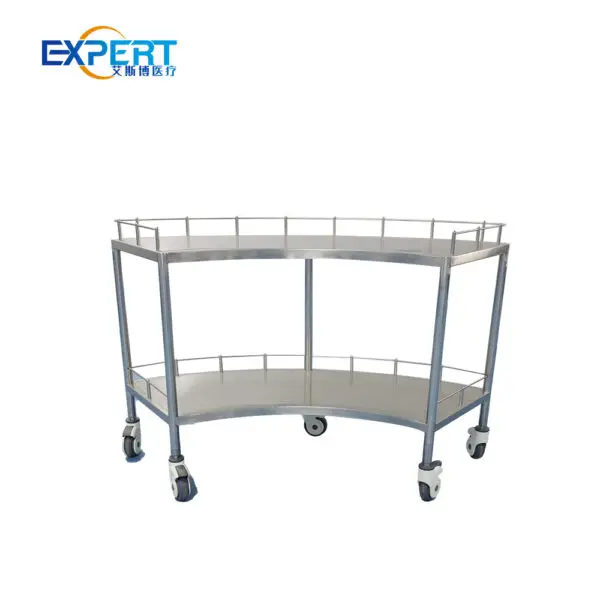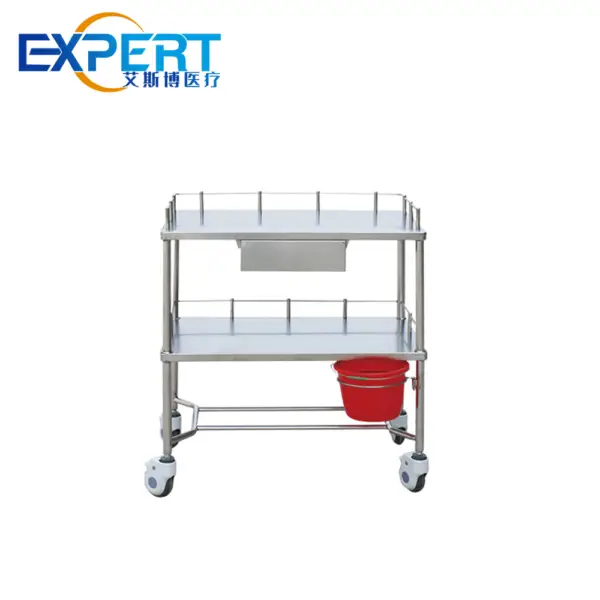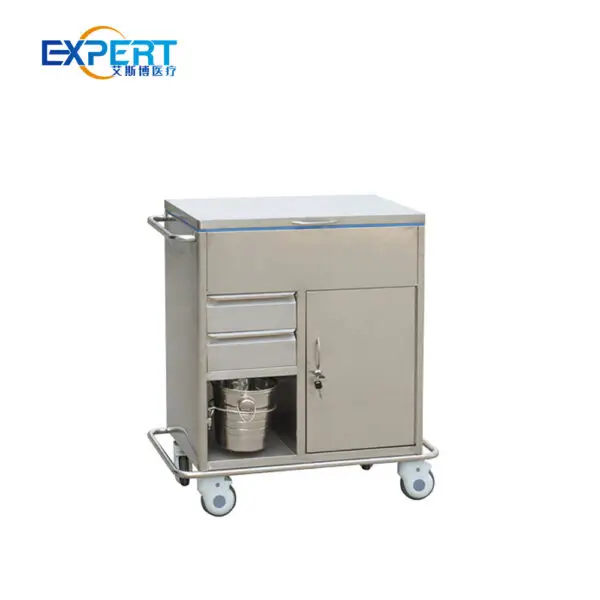Indirizzo
304 Il cardinale nord S.
Dorchester Center, MA 02124
Ore di lavoro
Dal lunedì al venerdì: 7:00 - 19:00
Fine settimana: 10:00 - 17:00
Benvenuti nel mio blog!
Prima di addentrarci nei contenuti, se sei interessato ai nostri prodotti o hai domande, non esitare a visitare il nostro Contattaci pagina sul sito web. Il nostro team è pronto ad assisterti con richieste, ordini o qualsiasi supporto di cui potresti aver bisogno.
Ora, iniziamo il nostro viaggio insieme. Spero che troviate i contenuti qui presenti interessanti, coinvolgenti e preziosi.

A hospital care cart is a specialized mobile or stationary unit designed to store, organize, and transport medical supplies efficiently within healthcare facilities. These carts are essential tools in modern hospitals, ensuring that nurses, doctors, and other medical staff can access critical supplies and medications quickly. By streamlining workflow, hospital care carts help reduce delays in patient care, improve staff efficiency, and maintain a higher standard of safety.
Hospital care carts serve as mobile workstations for healthcare providers. They are commonly used in patient rooms, operating rooms, and emergency areas to hold essential items such as medications, IV equipment, wound care supplies, and monitoring tools. A well-designed care cart can minimize clutter, prevent supply shortages, and help healthcare staff respond swiftly during emergencies, ultimately improving patient outcomes.
Hospital care carts are available in several variations, each suited to specific needs:
Hospital care carts provide a wide range of benefits that extend beyond simple storage. They enhance workflow efficiency, improve patient care quality, and contribute to a safer and more organized healthcare environment.
Time is critical in healthcare settings, and a well-organized hospital care cart allows nurses and staff to quickly locate medications, instruments, and other supplies. Instead of making multiple trips to supply rooms, staff can have everything they need within arm’s reach. This efficiency is particularly important in high-pressure areas such as emergency rooms, intensive care units, or surgical wards, where every second can impact patient outcomes.
By keeping essential supplies accessible, hospital care carts enable healthcare providers to deliver timely interventions. For instance, emergency medication carts ensure that drugs are readily available during critical situations, while mobile nursing carts allow staff to respond immediately to patient needs without leaving the room. Ultimately, these carts help maintain high standards of patient care and satisfaction.
Hospital care carts often come with multiple drawers, compartments, and labeling options to organize supplies logically. With modular bins, color-coded trays, and adjustable shelves, staff can categorize items according to usage frequency or medical specialty. This level of organization not only reduces errors but also supports staff in adhering to infection control protocols and hospital safety regulations.

When selecting a hospital care cart, it is crucial to consider its design, material, mobility, and additional features to ensure it meets your facility’s operational requirements.
Durable materials, such as stainless steel or high-grade plastic, are essential for long-lasting performance. Stainless steel carts are easy to sanitize, resistant to corrosion, and capable of handling heavy loads, while plastic or hybrid materials offer lightweight and cost-effective alternatives. Choosing the right material affects both the cart’s lifespan and its suitability for specific hospital environments.
A cart’s mobility is critical for efficient operations. Look for smooth-rolling, lockable wheels, ergonomic handles, and compact designs that can navigate narrow hallways or crowded wards. High-quality mobile carts allow staff to move seamlessly between patient rooms or treatment areas, saving time and reducing physical strain.
Hospital care carts with multiple drawers, adjustable shelves, and modular bins provide optimal organization. Integrated labeling systems and color-coded compartments improve accessibility, while specialized inserts can secure delicate equipment, reducing damage or loss. Thoughtful storage design enhances efficiency and helps maintain a clean and orderly workspace.
Lockable drawers and compartments are vital for storing medications, controlled substances, and sensitive patient data. Some hospital care carts include electronic locks or key-based security systems to comply with regulatory standards, such as HIPAA in the United States. Ensuring proper security prevents unauthorized access and protects both patients and medical staff.
Selecting the ideal hospital care cart requires a careful assessment of departmental needs, space availability, and specific operational workflows.
Different hospital departments have unique requirements. Emergency rooms need fully stocked mobile carts for rapid response, ICU units require multi-compartment carts with specialized monitoring tools, and outpatient clinics may benefit from compact carts for limited storage space. Matching the cart to your department’s function ensures optimal efficiency and usability.
The size and storage capacity of a hospital care cart should reflect the volume of supplies your staff uses daily. Oversized carts can be cumbersome and difficult to maneuver, while undersized carts may require frequent refilling and increase staff workload. Evaluate your inventory needs carefully to select the appropriate size.
Many suppliers offer customizable hospital care carts. Options include additional drawers, IV poles, electronic locks, ergonomic handles, or specialized shelving to accommodate different types of medical equipment. Customization allows hospitals to tailor carts to their unique workflow, increasing productivity and staff satisfaction.

Proper maintenance is essential for ensuring the longevity and functionality of hospital care carts, as well as for maintaining a hygienic healthcare environment.
Hospital care carts require regular cleaning and disinfecting to prevent the spread of germs and hospital-acquired infections. Use hospital-grade disinfectants, pay special attention to high-touch areas like handles and drawer fronts, and establish a routine cleaning schedule.
Perform routine checks of wheels, locks, drawers, and shelves to ensure they function smoothly. Timely repairs prevent disruptions in patient care and avoid costly replacements. Staff should be trained to report any malfunctions immediately.
Avoid overloading drawers, handle the cart with care, and use protective covers where appropriate. Consistent maintenance prolongs the life of the cart and ensures that it remains a reliable tool for daily operations.
Several trusted brands offer high-quality hospital care carts suitable for various medical settings. Notable examples include Rubbermaid, Metro, JACO, and other specialized medical equipment manufacturers known for durable and ergonomic designs.
Hospital care carts are widely available through online marketplaces such as Amazon, Alibaba, and medical supply websites. Purchasing online allows hospitals to compare features, read reviews, and select models that fit budgetary and functional needs.
Large facilities may benefit from bulk orders, which can provide cost savings, extended warranties, and service packages. Working with suppliers directly allows hospitals to negotiate customized carts and ongoing support for long-term use.

Hospital care carts vary widely in cost depending on materials, size, and features. Basic plastic carts may start at a few hundred dollars, while premium stainless steel carts with advanced security systems and modular designs can cost over a thousand dollars per unit.
Budget-friendly carts are suitable for small clinics or facilities with limited funding, offering essential storage and mobility. Premium models provide enhanced durability, security, and customization, which can significantly improve efficiency in larger hospitals and specialized departments.
Investing in a high-quality hospital care cart is often justified by the long-term benefits. Improved workflow, reduced staff time spent searching for supplies, and enhanced patient care can outweigh the initial cost, making premium carts a worthwhile investment for busy medical facilities.
Scegliere il meglio carrello per cure ospedaliere for your facility involves considering multiple factors: type, size, material, mobility, storage capacity, and security features. By understanding the specific needs of each department, assessing available options, and planning for maintenance, healthcare facilities can select carts that improve workflow, enhance patient care, and provide long-term value. Investing in the right hospital care cart ensures efficiency, safety, and satisfaction for both staff and patients, making it a critical element in modern healthcare operations.
What is a hospital care cart used for?
A hospital care cart is used to store, organize, and transport medical supplies, medications, and equipment efficiently within hospitals and clinics.
How do I choose the best hospital care cart for my facility?
Consider the cart’s type (mobile or stationary), size, storage capacity, material, and security features to match your department’s workflow and needs.
Quali sono i diversi tipi di carrelli per l'assistenza ospedaliera?
Common types include mobile carts, stationary carts, emergency carts, medication carts, and specialty carts for specific medical departments.
How do I maintain a hospital care cart?
Regularly clean and disinfect surfaces, inspect wheels and locks, and avoid overloading to ensure safety, hygiene, and longevity.
Where can I buy a hospital care cart?
Hospital care carts can be purchased from medical supply stores, online marketplaces like Amazon or Alibaba, or directly from specialized manufacturers.
If you’re unsure which hospital care cart is best for your facility or department, our experts are here to guide you. Contattaci today for a personalized consultation, and ensure your staff has the right tools to deliver efficient and safe patient care. Don’t wait—get in touch now to improve workflow, organization, and patient outcomes!
